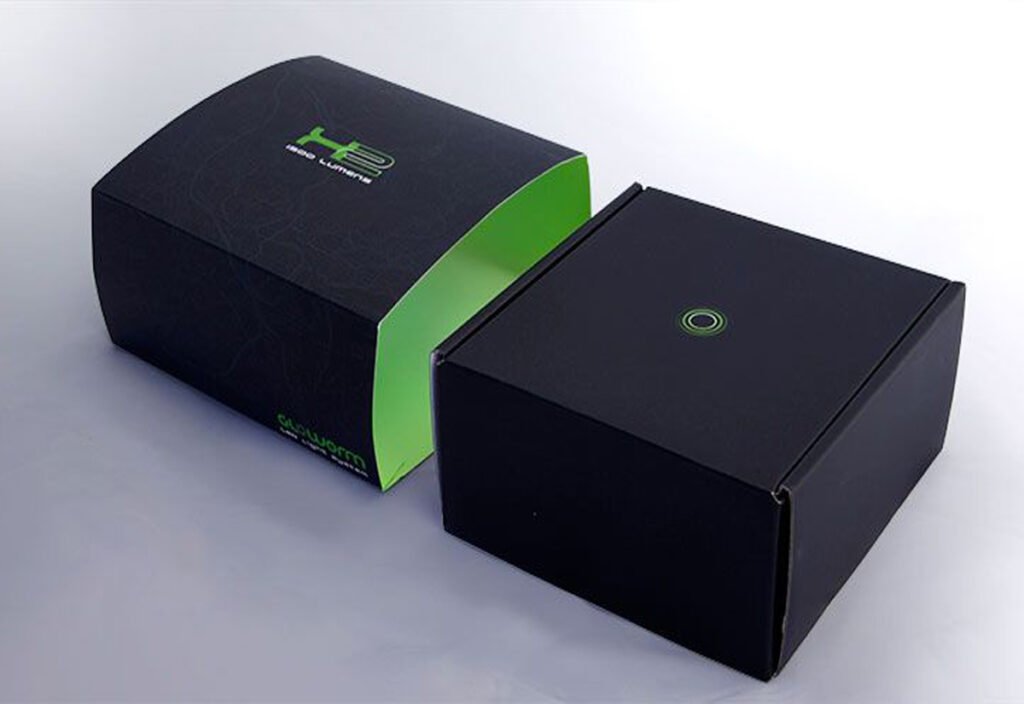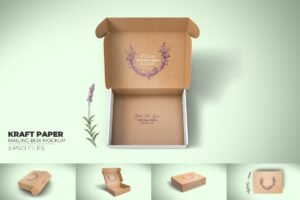Custom boxes have become an essential component of product packaging. They not only protect the contents but also serve as a powerful marketing tool, influencing the perception of the product and the brand. This article aims to explore the various types and qualities of custom boxes, helping you make informed decisions for your packaging needs.
Types of Custom Boxes
Rigid Boxes
Rigid boxes are known for their sturdiness and luxurious appearance. They are typically made from thick cardboard or paperboard and are often used for high-end products such as cosmetics, jewelry, and premium electronics. The features of rigid boxes include a solid construction that provides excellent protection against damage and a smooth, seamless finish that gives a sophisticated look.

The materials used in their construction are of superior quality, such as heavyweight cardstock or coated paper. The inner layers might include foam or fabric for added cushioning. Rigid boxes are ideal for products that require a high level of presentation and protection, as they convey a sense of quality and exclusivity.
Corrugated Boxes
Corrugated boxes are widely used due to their cost-effectiveness and durability. They consist of a fluted inner layer sandwiched between two linerboards. The different flute types, such as A, B, C, and E, offer varying levels of strength and cushioning.

Corrugated boxes are suitable for a wide range of applications, from shipping heavy goods to packaging consumer products. Their advantages include excellent shock absorption, making them ideal for protecting fragile items during transit. They are also recyclable and eco-friendly, which is an important consideration for many businesses.
Folding Cartons
Folding cartons are highly versatile and offer numerous design options. They are made from lightweight paperboard that can be easily folded into the desired shape. This makes them suitable for a wide variety of products, from food and beverages to pharmaceuticals and household items.

Common folding techniques allow for creative designs that can catch the consumer’s eye on the shelf. Folding cartons can be printed with vibrant colors and detailed graphics, providing an effective means of brand promotion. Their flexibility in design and ease of production make them a popular choice for many industries.
Sleeve Boxes
Sleeve boxes consist of a outer sleeve that slides over an inner box. This structure provides a unique branding opportunity as both the sleeve and the inner box can be customized with graphics and messaging. They are often used for products where a reveal or surprise element is desired, adding an interactive aspect to the packaging experience.

The functionality of sleeve boxes makes them suitable for products that require multiple components or have a story to tell through the packaging. They can be designed to create a sense of mystery or anticipation, enhancing the overall product presentation.
Qualities of Custom Boxes
Material Quality
The quality of the paper or cardboard used is crucial in determining the durability and appearance of the custom box. Different paper grades have distinct properties, such as thickness, stiffness, and surface smoothness. Higher-grade papers offer better strength and a more refined finish.
Durability and strength are essential, especially for boxes that need to withstand handling, stacking, and transportation. The choice of material should be based on the weight and fragility of the contents, ensuring that the box can provide adequate protection throughout the supply chain.
Printing Quality
The printing method used on custom boxes can significantly impact the final look. Options include offset printing for high-quality, detailed images with accurate color reproduction; digital printing for short runs and variable data; and flexographic printing for large-scale production with cost-effective results.
Color accuracy and resolution are vital for brand consistency and visual appeal. Clear, sharp images and vibrant colors can make the box more attractive and enhance the brand’s image.
Finish and Coating
The finish of a custom box can give it a distinct look and feel. Gloss finishes provide a shiny, reflective surface that makes colors appear more vivid. Matte finishes offer a more subdued, elegant look with a non-reflective surface. Satin finishes strike a balance between the two, providing a soft sheen.
Protective coatings, such as varnish or laminate, can increase the box’s resistance to scratches, moisture, and fading, prolonging its lifespan and maintaining its appearance.
Structural Integrity
Reinforcements, such as corner guards and double-walled construction, can enhance the stackability and load-bearing capacity of custom boxes. Well-designed joints and closures ensure that the box remains intact during handling and storage.
Factors Influencing Quality
Manufacturing Process
The cutting and shaping techniques employed in the production of custom boxes affect their precision and overall quality. Advanced machinery and skilled operators can ensure clean cuts and accurate folds, resulting in a seamless and professional finish.
The assembly methods used, whether manual or automated, also impact the consistency and quality of the final product. Automated processes can offer higher speed and accuracy, but manual assembly might be preferred for complex or custom designs.
Design Complexity
Intricate designs with multiple panels, die-cuts, or embossing can add visual appeal but may also increase production costs and potential quality issues. Simplicity in design can sometimes be more effective in communicating the brand message and ensuring consistent quality.
It’s important to strike a balance between a creative design and the practicality of manufacturing to achieve the desired quality without sacrificing functionality.
Supplier Expertise
The experience and reputation of the supplier play a significant role in the quality of custom boxes. A supplier with a proven track record in the industry is likely to have the knowledge and skills to handle various requirements and deliver consistent results.
Quality control measures implemented by the supplier, such as inspections at different stages of production, ensure that only boxes meeting the specified standards are delivered. Choosing a reliable supplier is crucial for obtaining high-quality custom boxes.
Choosing the Right Custom Box
When choosing a custom box, several factors need to be considered. The type of product being packaged determines the level of protection and size requirements. For delicate items, a rigid box or a corrugated box with additional padding might be necessary.
Budget constraints also play a role. While higher-quality materials and complex designs can enhance the box’s appeal, it’s important to ensure that the cost is justified by the value it adds to the product.
Brand messaging and marketing goals should guide the design and choice of custom boxes. The box should align with the brand image and communicate the key selling points of the product effectively.
Future Trends in Custom Box Manufacturing
Sustainability and eco-friendly options are becoming increasingly important. Consumers are more environmentally conscious, and businesses are looking for ways to reduce their carbon footprint through the use of recyclable materials and sustainable production processes.
Technological advancements in production, such as 3D printing and augmented reality integration, offer new possibilities for creating unique and interactive custom boxes.
Evolving design aesthetics, such as minimalist designs and bold, unconventional colors, are shaping the future of custom box packaging to stand out in a crowded marketplace.
Conclusion
Understanding the types and qualities of custom boxes is essential for making informed packaging decisions. The right combination of box type, material quality, printing, and finish can significantly enhance the product’s presentation, protection, and marketability.
By considering the factors that influence quality and staying updated on the latest trends, you can select custom boxes that not only meet your functional requirements but also leave a lasting impression on your customers.






